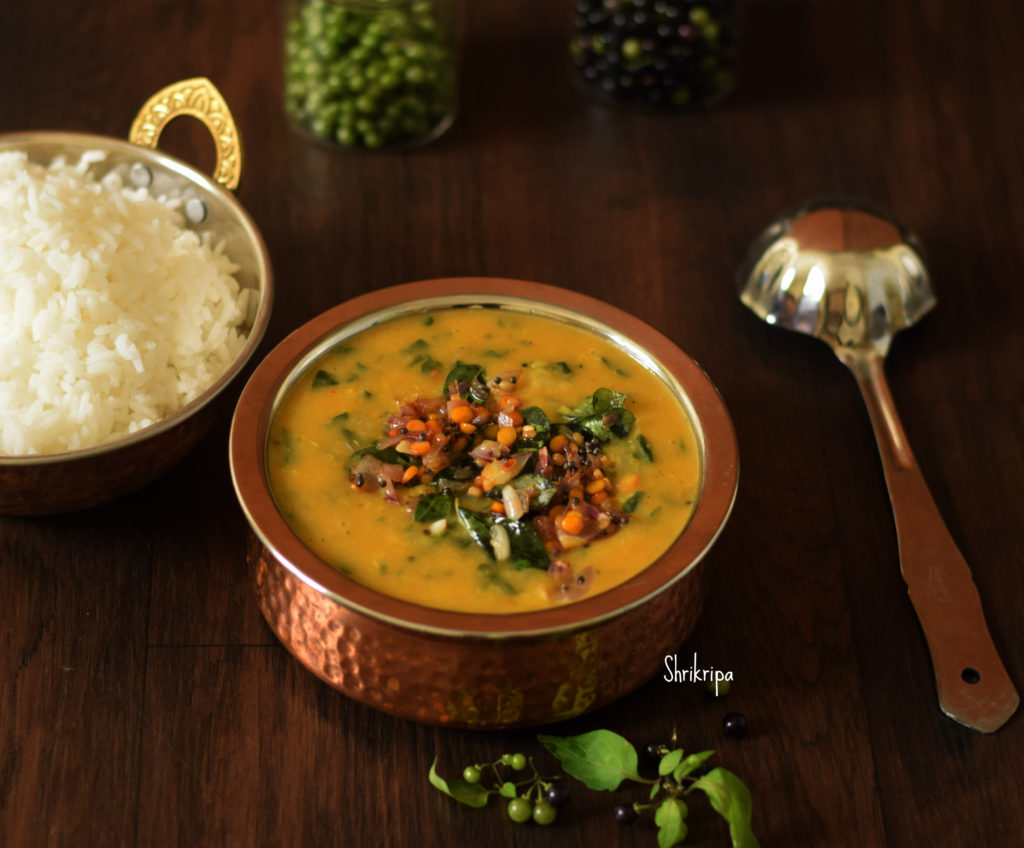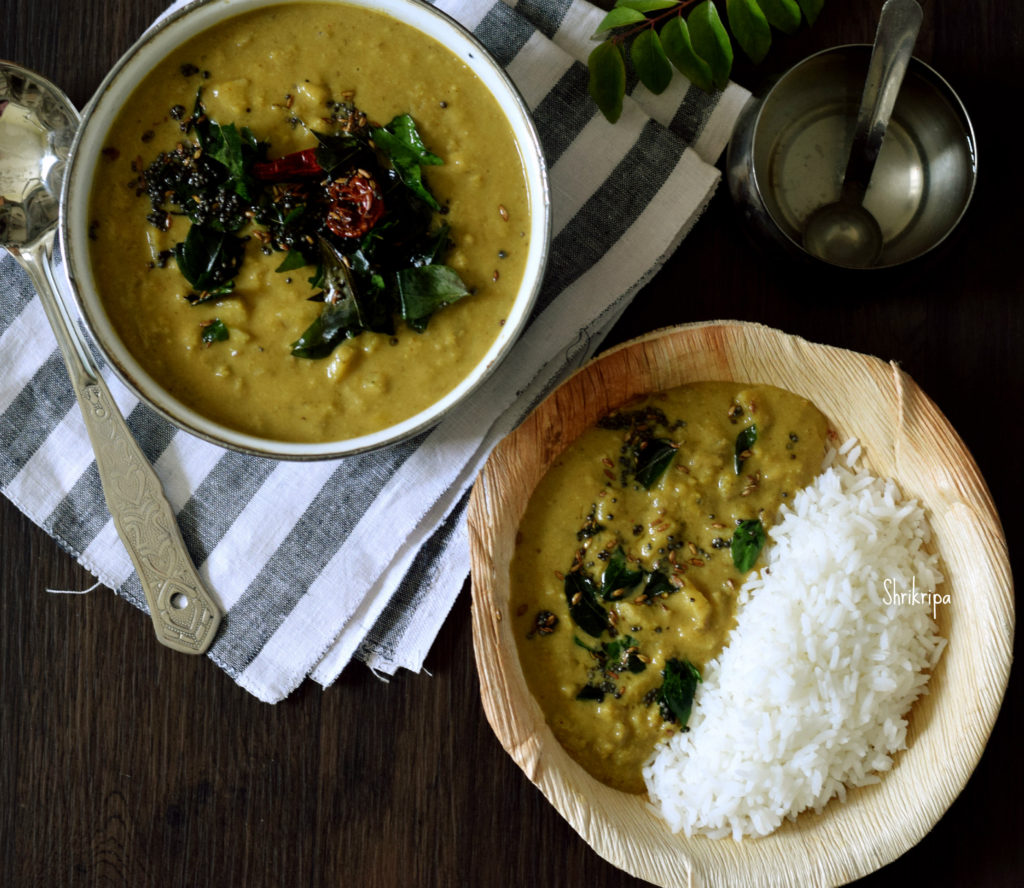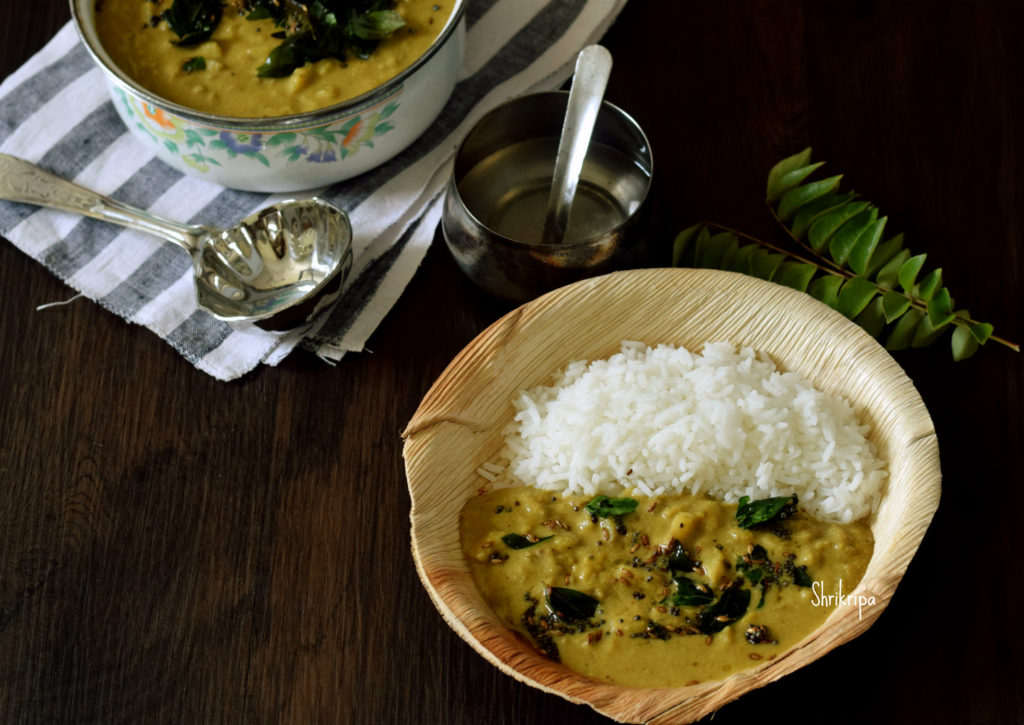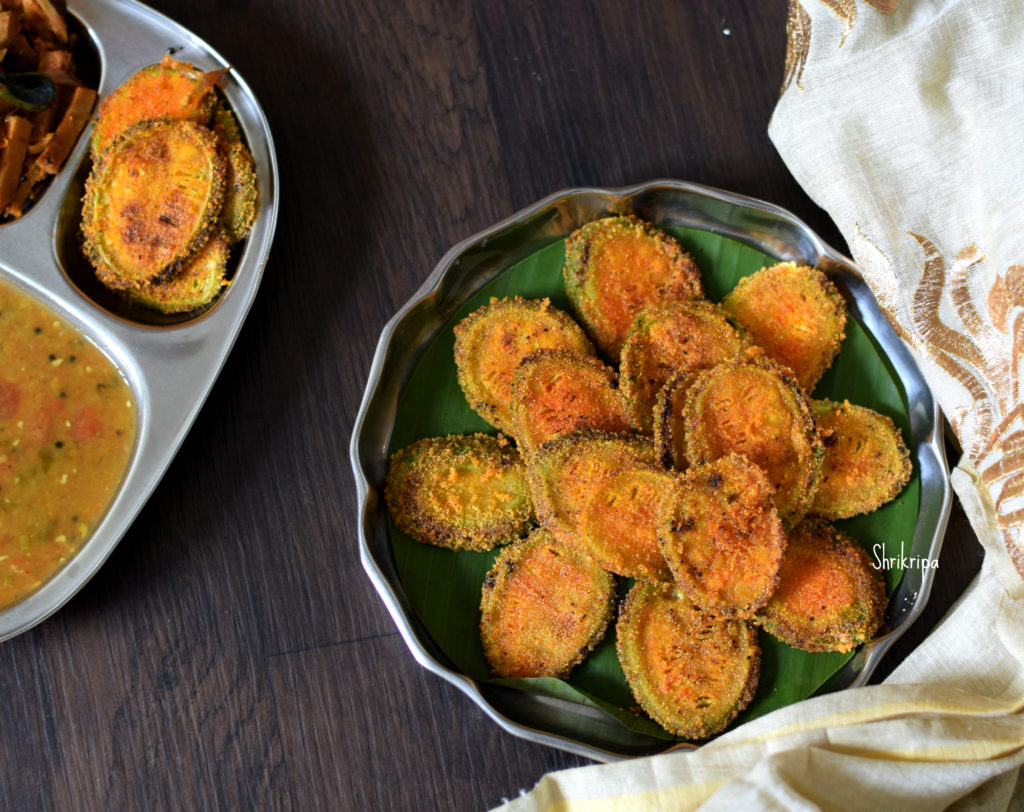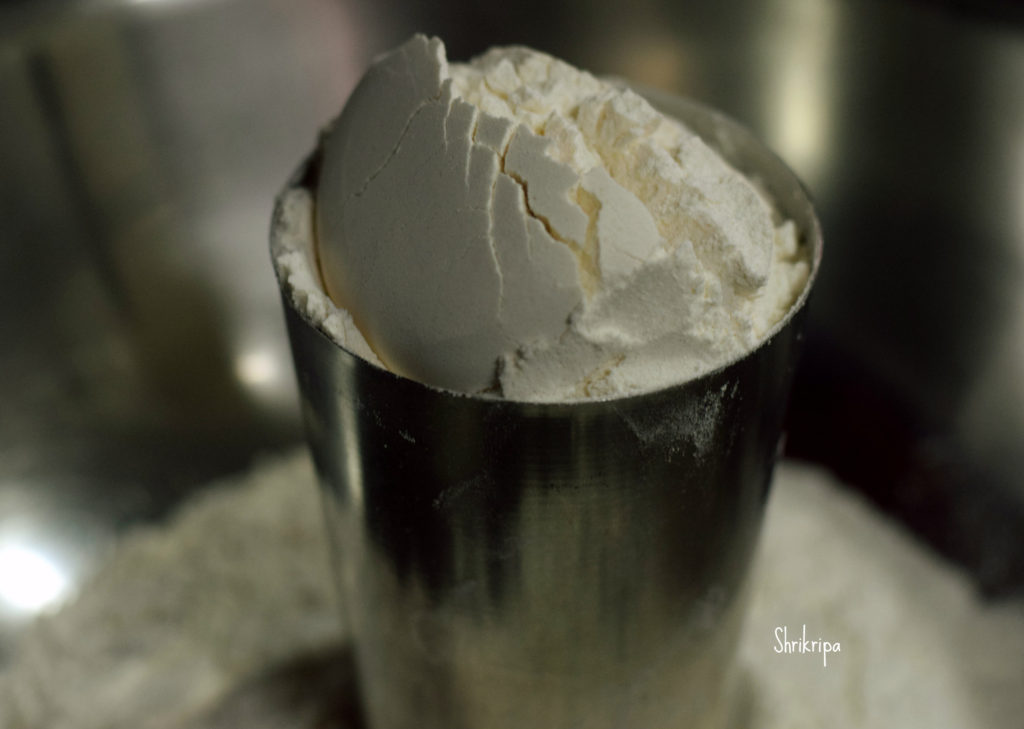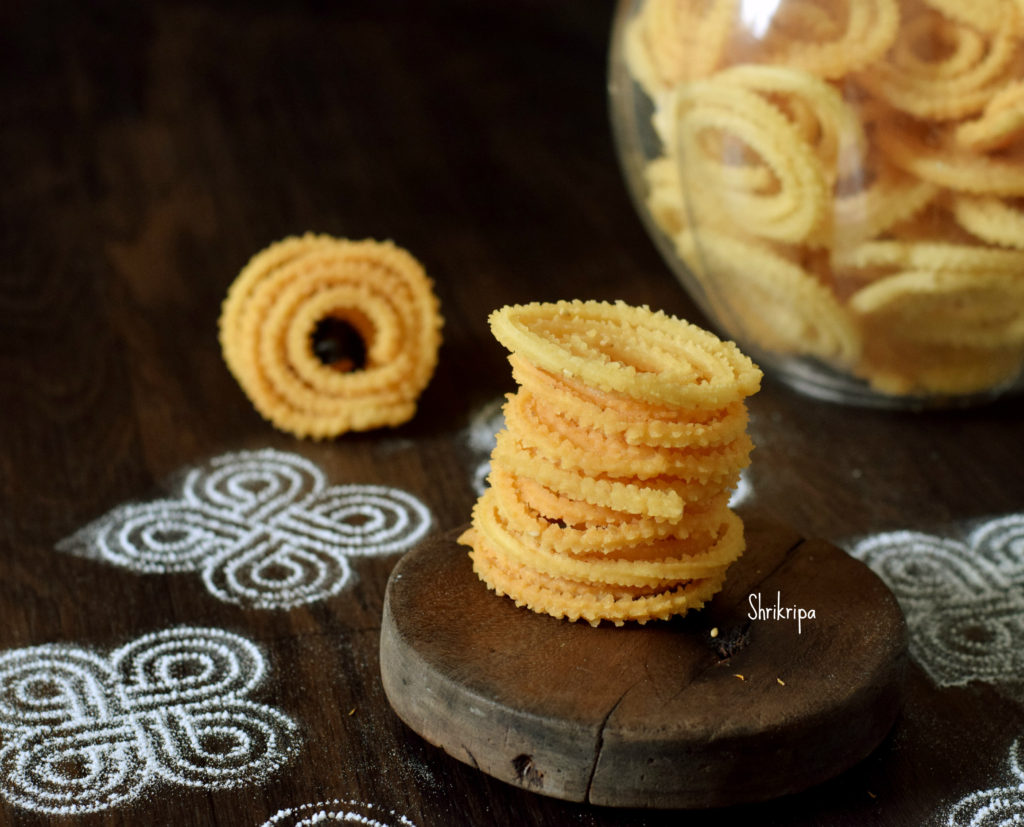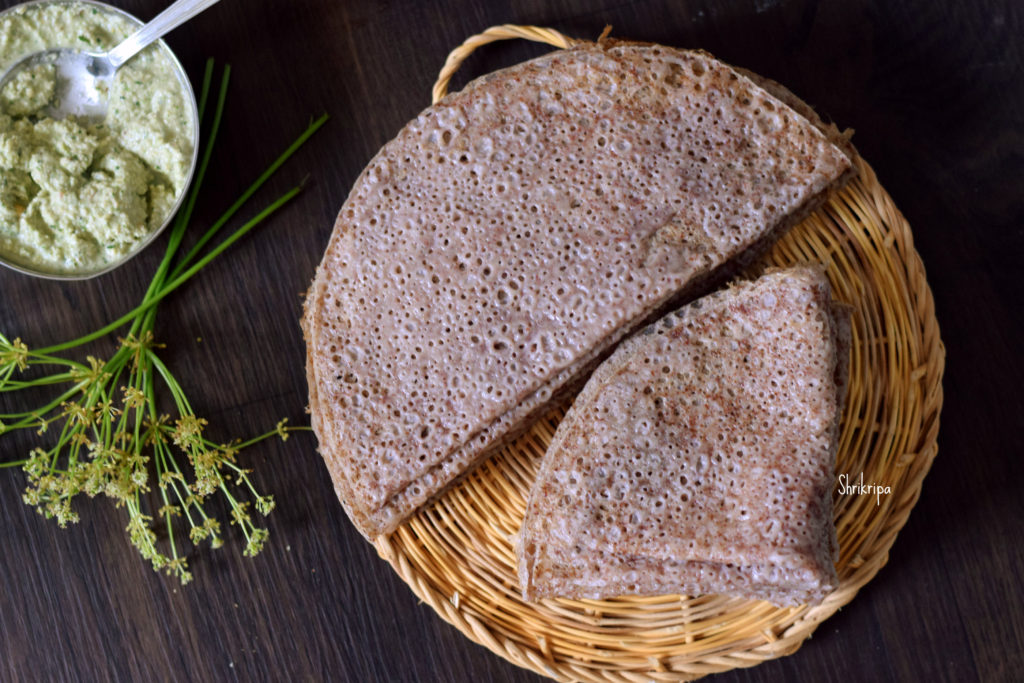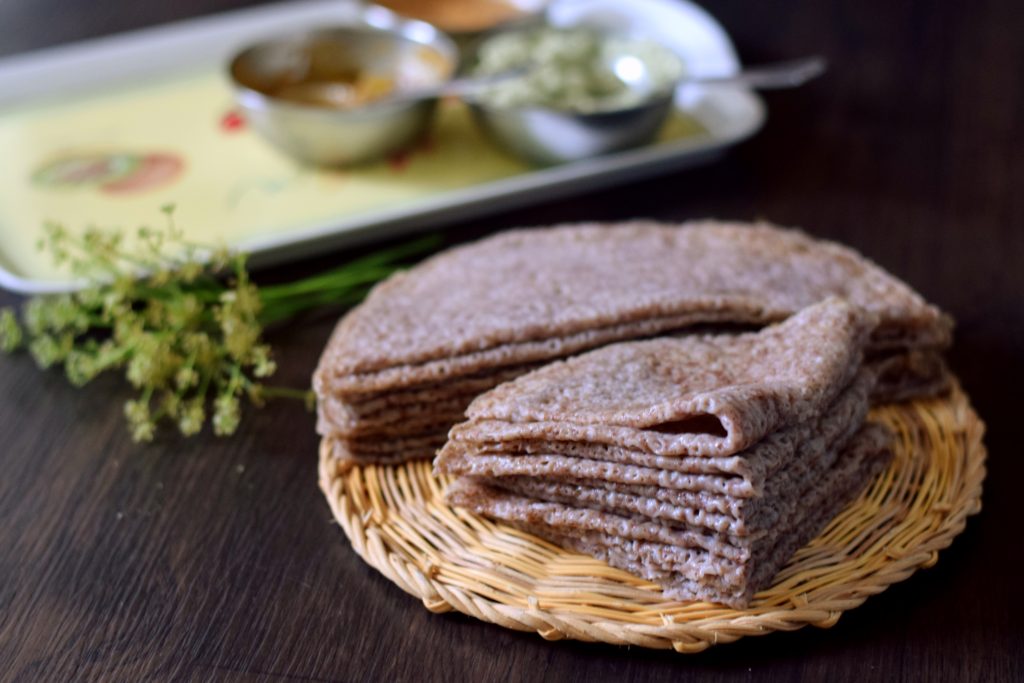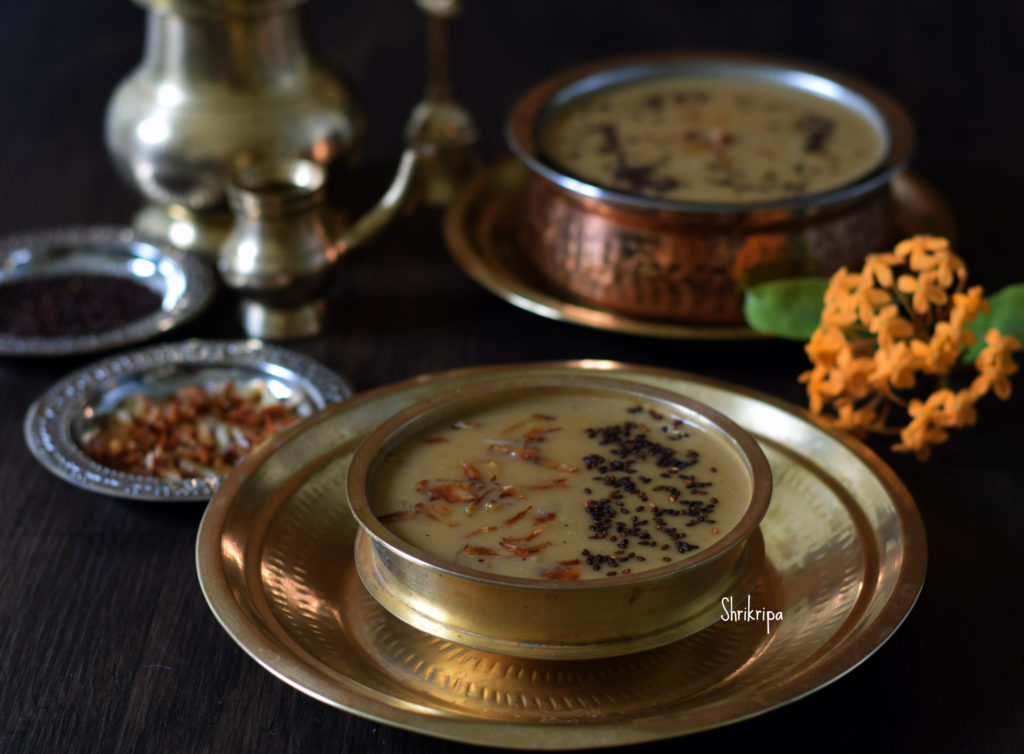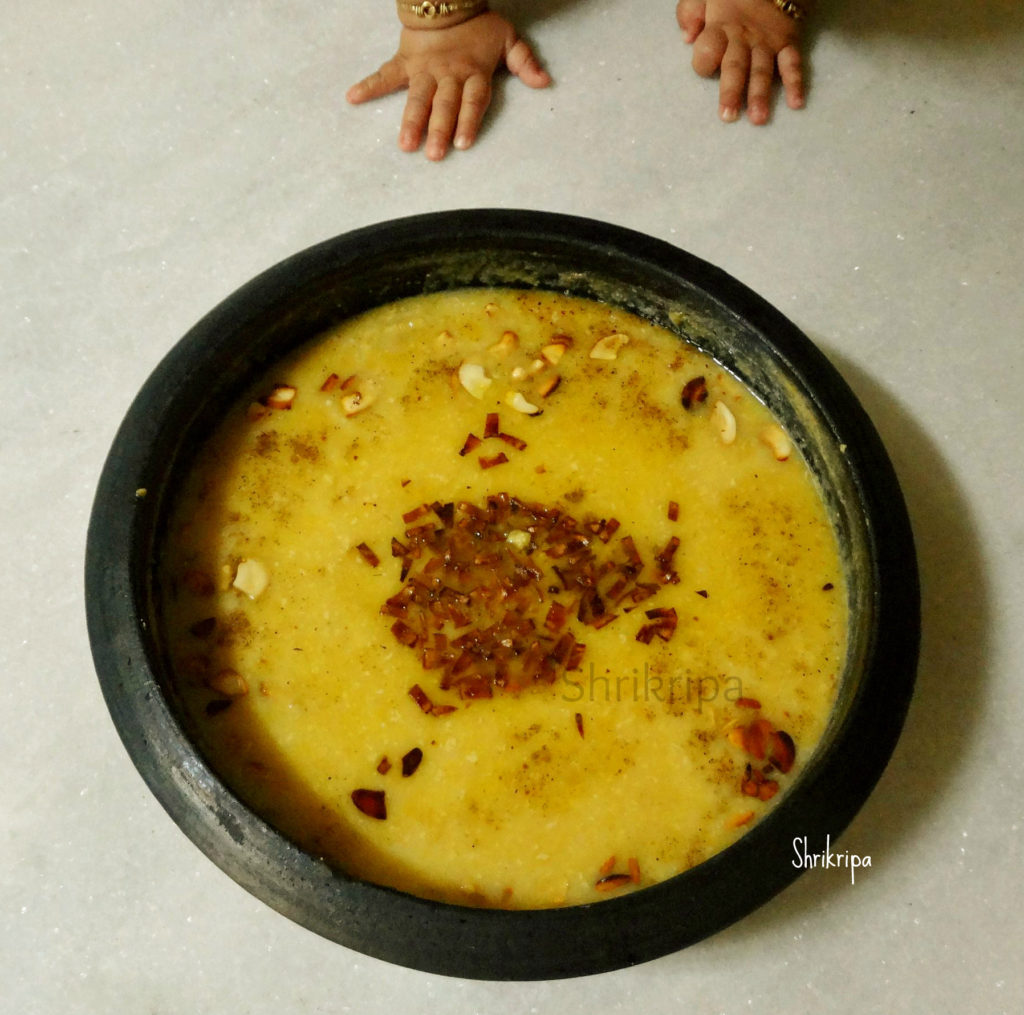Have you ever tasted this wonder fruit? If no, you should pluck next time when you see in your vicinity and should enjoy it and feed all the goodness to your body. When we were young, it was our pass time, while walking towards school. We would pluck all these edible different berries though we never knew the goodness that we were getting form these.

Traditionally, in our region, these berries are not at all used in cooking. As I know, it is used only in Tamilnadu in a dry form, after soaking it in buttermilk and sun drying. Normally these dried berries are made into sweet and tangy curry called Vathal Kuzhambu and I tried the fresh berries to include in my regular Pongal Gojju, as a side dish.
As I said in the earlier post, black night shade has many names and these berries are also known as Ganike Hannu, Kakke Hannu, Chavi Hannu in Karnataka. Manathakkali, Sukkuti in Tamil. Nakoi in Hindi.
Black Nightshade (solanum nigrum) is sometimes confused with Deadly Nightshade (Atropa belladonna) of which berries grow individually and in this, we see a bunch formation of berries.
It has a whole lot of health benefits. It is a major source of anti-oxidants and moreover anything else, it is pesticide-free and free of cost 😀
For me, it is a gift of mother nature. I have not potted the plant and it is growing wildly in my garden and feeding me with greens and berries. This time, I have added these berries in my usual side dish, which I prepare for Pongal and liked as well.
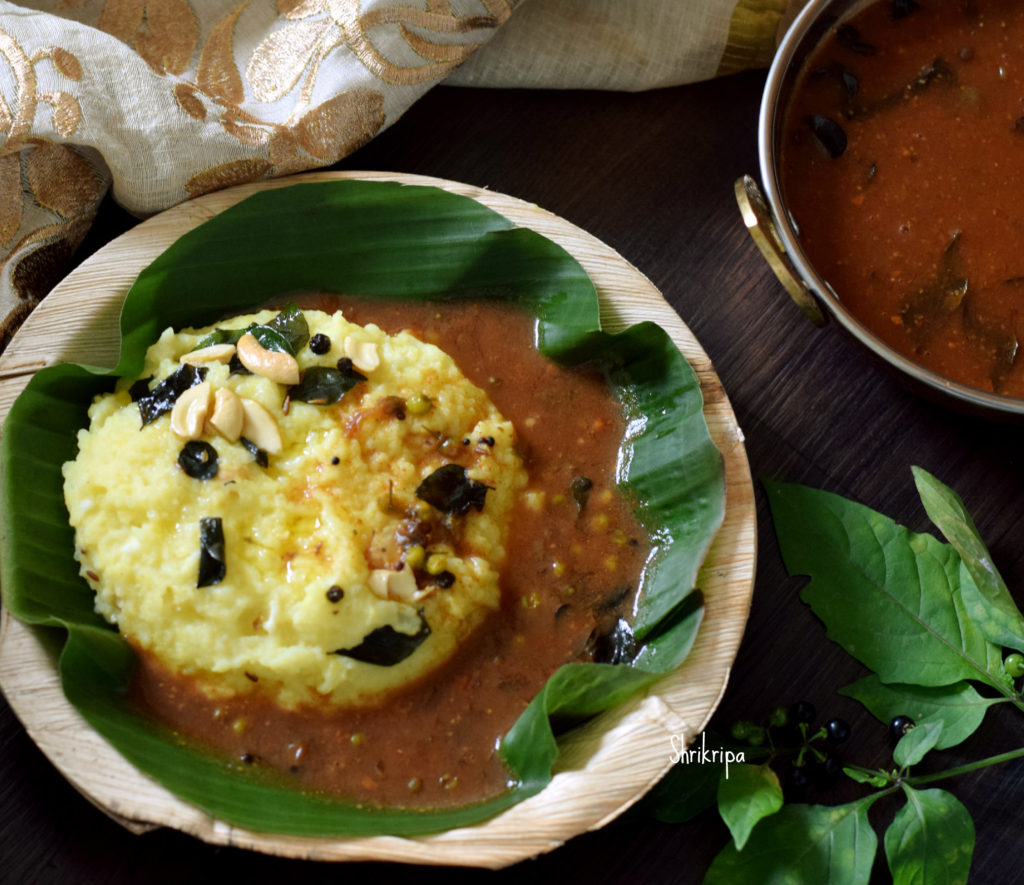
Now we will move towards the details –
Ingredients:
Ganike Hannu – 1 cup (I have used black as well as green unripe one)
Tamarind – One gooseberry size
Jaggery
Salt
Sambar powder – 1 to 2 teaspoons
Rice flour – 1 to 1 ½ teaspoon
Sesame Oil / any cooking oil– 1 tablespoon
Fenugreek seeds – ½ teaspoon
Hing – ¼ teaspoon
Mustard – 1 teaspoon
Cumin – ½ teaspoon
Dried Red chilli – 1
Curry leaves – 1 spring
Method:
-Soak tamarind in a cup of water.
-Wash berries and keep them ready.

-Keep the vessel for seasoning, heat oil, first fry fenugreek seeds.
-Splutter mustard, cumin, hing, chilli and curry leaves and drop berries and fry until it wilts.
-Add tamarind water, salt, jaggery (jaggery should be a little more)
-Boil until berries are cooked and soft. Time to add Sambar powder.
-Mix rice flour in ¼ cup of water, mix and pour it into the curry.

-Boil this nicely, until the top of the curry looks glossy. In the meantime, adjust and add salt, jaggery or sambar powder if needed.
-Serve this Gojju with Pongal as a side dish or you can have it with white rice as well.
-It is sweet, sour and Hot in taste and pairs very well with Pongal.

